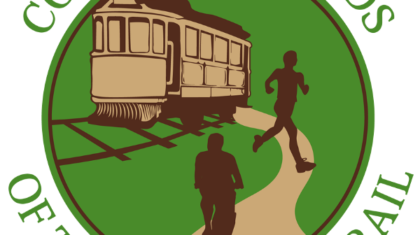Blog 1 of 4 about the Empire State Trail

The Empire State Trail will be the longest multi-use trail in the US. In her own words, hear from Lindsay Zefting, the project manager and one of Alta’s senior engineers working on this groundbreaking project.
Q: The Empire State Trail is one of the biggest projects of its kind in the nation. Can you tell us more about what that means?
Lindsay Zefting: The Empire State Trail is a cross-state trail that will connect Buffalo to the west, New York City to the south, and Rouse’s Point at the Canadian border to the north. At 750 miles, it will be longest state-wide trail in the United States. The funding is a single $200 million-dollar state investment, which is incredibly unique for trail projects. The trail itself will be a mix of off-road and on-road trails and it connects 400 miles of existing shared use paths. The project is ambitious, with over 60 different construction projects totaling 350 new miles, and coordination between five state agencies and over a dozen local and county governments. The Empire State Trail will be completed by December 31, 2020. Once complete, the ride from NYC to Buffalo will be about 80 percent off-road.
Q: How did the Empire State Trail start?
Lindsay Zefting: Alta began working on the Empire State Trail before it had the name. We had been working with the Hudson River Valley Greenway (a state entity) to develop a plan to complete a greenway along the Hudson River. Due to the active railroads along both shores of the river, a shared use path in the short term was infeasible, so Alta’s approach was to connect all of the existing shared use paths within the valley. This short-term alignment crossed the Hudson River in several locations and was nearly 50 percent complete. At the same time this study was concluding, the Erie Canal was approaching its bicentennial celebration and there were many people advocating for funds to complete the trail. By combining the two corridors, and planning an extension to the Canadian border, this quickly became a statewide initiative and gained the full support and ownership by Governor Cuomo. He announced the “Empire State Trail” in his 2017 State of the State address and we were off to the races!

Q: How has Alta been involved in the project?
Lindsay Zefting: The 60 or so projects were in varying stages when the Empire State Trail was initiated. Some had been fully designed and just needed construction funding, while others, including a 35-mile trail along a utility corridor, had only very preliminary feasibility studies. Alta supported a significant portion of the planning efforts, including the design guide, master plan, and the conceptual plans for the Albany Hudson Electric Trail, Maybrook Trail, and NYSDOT on-road connections. Alta has helped coordinate with the state agencies, manage the budget, and create and review design plans for EST projects. It has been exciting to work on such a diverse project, when every week brings something new. One week could be co-branding plans and signage plans, and the next could be intersection design and doing trail user estimates. We have all really enjoyed working with the Hudson River Valley Greenway and other EST partners to solve problems as they arise and provide technical expertise.
Q: What are some unique challenges that have come up? Any creative solutions? What’s the biggest lesson learned?
Lindsay Zefting: With a project of this magnitude — 60 projects happening at the same time, on the same schedule, using the same pot of money — there are bound to be challenges. With the Empire State Trail, we have probably run into everything: right of way, endangered species, delayed permits, higher costs, wetlands, maintenance concerns, and local approvals. Lesson Learned? Especially when budget and schedule are factors, always have a plan B! With all of that and more, we’re still on track, which fills me with such a sense of pride and accomplishment.
Stay tuned for another round of updates! In the meantime, follow us on social media or subscribe to our monthly newsletter to learn more.
Don’t forget to hit that ? button so others can see this post!
Read the second blog in the series here.


